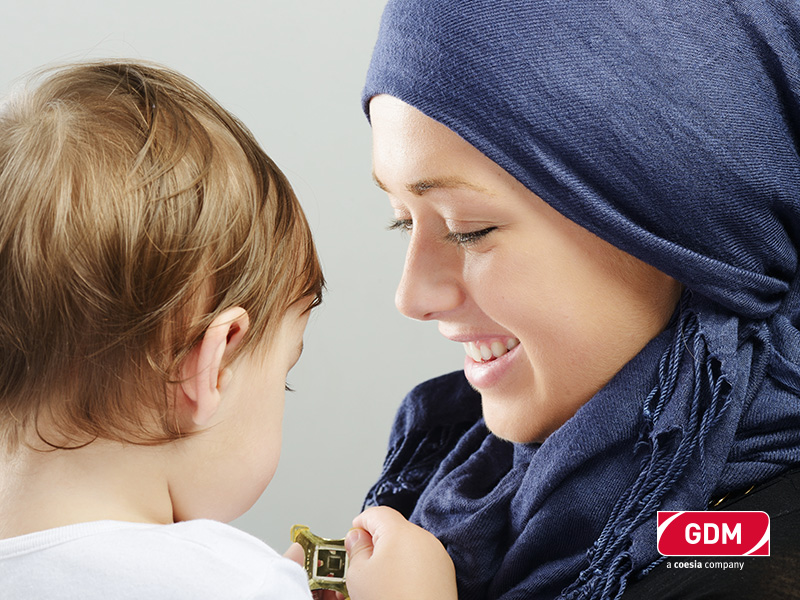At the heart of Baby Diapers: where quality meets innovation
Contents of the article
1. DEMOGRAPHICS AND GLOBAL AWARENESS DRIVING GROWTH
2. GLOBALLY POSITIVE OUTLOOK, AT DIFFERENT PACES
3. PRODUCT QUALITY IS THE NAME OF THE GAME
4. STRAIGHT TO THE CORE
Dynamic, challenging and demanding: to succeed in today’s Baby diapers and pants market, manufacturers are focusing on consumers’ acceptance and the highest product performance, while balancing the lowest possible operating costs. How to make it happen?
Demographics and global awareness driving growth
Globally, the Baby diapers and pants market is showing a positive growth trend: Euromonitor data highlight that, towards the end of 2022, the global consumption of Baby Diapers and Pants is projected to reach 213 bn units, for a total value of 51 bn €.[1]
There are multiple reasons behind this tirelessly growth:
-
Global population growth with enlarging middle class, especially in developing countries, fueling baby products’ sales
-
The personal hygiene awareness improving worldwide, with parents looking for products that can suit their babies’ needs in the best possible way
-
As a consequence, the daily consumption of diapers is increasing, reaching five products per baby on average, across different ages
Globally positive outlook, at different paces
2017 has marked a record year for Baby diapers and pants consumption: 182,3 bn units sold globally, +3% CAGR 2016-2018.[2]
But from a regional perspective, where does growth come from? 48% of consumption stays in the more traditional markets of North America, China and Europe. Non-traditional markets, as stated in a 2015 survey conducted by Nielsen, are the engine behind global growth trends.
According to Euromonitor data, Middle East is among the new areas pushing global growth. With a local market still dominated by Baby Open diapers, 2017 has generated consumption reaching 14,8 bn units, comparable to Western Europe. Rising disposable income, modern retail development, high urbanization rate (second only to Asia), and a strong migration flow are driving its expansion (+1,7% CAGR 16-18).[3]
The political-economic instability of some areas in this region and the consequent uncertain framework lead consumers to acknowledge their specific needs and trust in brands that assure quality and performance at reasonable levels of spending, minimizing the risk of wasting money on a product that does not meet their expectations.
Among new territories for Baby Diapers, Africa is definitely one of the most fertile in the world. Reaching around 15,4 bn Baby diapers purchased in 2017, with an astonishing forecasted growth of +5,7% CAGR 2016-2018[4], manufacturers in the African continent are now the key drivers of this area’s future development.
The regional demographic trend is shaping the future of the continent: Africa’s fertility rate is the highest in the world, with 4.7 children per woman (vs. 2.5 global average).[5] Moreover, according to the African Development Bank, the middle class has doubled in less than 20 years, mainly thanks to the improved political solidity and several government reforms unleashing the private sector leading to +3,7% GDP increase in 2017. Algeria, Morocco, Egypt, South Africa and Nigeria — the “power five” markets — are home of two-thirds of the continent’s consumer class.
In Algeria and Northern Africa, where the market is more mature, a premiumisation trend, mixed with a high level of competition in a difficult landscape, is now privileging those manufacturers that are investing in new products, such as Baby Pants, and features, combined with cost-effective designs. The evolution of Sub-Saharan markets deserves a closer look: benefitting from the highest birth rates of the continent and key global players' presence that, through the years, have educated consumers on diapers use by means of marketing campaigns, Nigeria has afterwards become the Central African country with the highest Baby diapers penetration.
Summarizing the impact of the demographic and macroeconomic indicators in Middle East and Africa in the Baby diapers and pants segment, consumers are becoming more and more demanding when it comes to product quality – performance and comfort, and price positioning.
Product quality is the name of the game
A high quality Baby Diaper accompanies the baby throughout his /her day, at all stages of development. For this reason, it is essential to understand what challenges parents face and what they value in order to design and offer appealing and satisfying products. Caregivers consider many different aspects when buying baby diapers, but there is one main feature that comes above all: quality. New developments in raw materials and absorption capabilities – with an eye on sustainability – are instrumental to meet consumers’ requests of wear-ability and skin protection, through the best absorbency securing no leakage.
Above all indeed, parents seek options that are gentle on their baby’s skin. Nielsen Survey has shown that 40% of global respondents say this is the most important attribute when they decide what diaper brand to purchase, followed by the good fit: diapers must be comfortable. Moreover, as they report, we know that:
“Leakage protection is particularly important in Africa and the Middle East. It tops the list of most important attributes in both regions, cited by 40% and 39% of respondents, respectively”.
Straight to the Core
To comply with the consumers’ purchase drivers stated above, the latest product development trends have been focusing on thinner and lighter products, prioritizing the softness, absorbency/leakage protection and body fit performance of the diaper. These are essential aspects to consider, since today’s parents look for products able to keep their baby’s skin dry for close to 12 hours. The absorbent core is the heart of the diaper. A high quality one meets caregivers’ needs providing the best performance in terms of:
Absorbency, through improved wetness distribution thanks to a precise mix and allocation of fluff and SAP featuring permanent channels construction, redefining the super-absorbent polymer application
Dryness, through a specific design that allows the fluid to quickly move from the surface into the core
Minimized swelling and sagging of the diaper for the baby to feel light and comfortable
Considering market’s trends and needs, we have developed an innovative Core, generating value throughout the whole value chain.
The best Product Performance
We have conducted benchmark lab tests with a German independent laboratory on our new GDM’s baby diapers, manufactured with the new core: results confirm high absorption, low acquisition time and low rewet.
Raw materials and operation costs savings
Thanks to the improved recipe stability, minimizing product weight variation, and the best possible mix of fluff and SAP according to your needs, our solution allows to save up to 800 k€ raw materials per year and installed power up to 30%.[6]
Let’s not forget logistics
GDM New Core Baby diapers are thinner, thanks to the best mix of fluff and SAP: as a result, bags size is reduced! You can now maximize your containers, with +25% serviceable space. Besides, more bags can be placed on the same shelf space.[7]
Across the globe, consumers today are increasingly looking for high-quality eco-friendly products: the demand for sustainable baby diapers is expected to substantially grow over the next few years. In line with this trend, GDM’s solutions are designed envisioning the use of eco-friendly and natural materials, together with a strong attention to waste and materials minimization.
By providing innovative solutions and reliable support to you, we want to be your partner in meeting your strategic goals. Our new and convenient baby diapers’ core satisfies specific market needs while optimizing your whole value chain. Our technical solutions can support you in manufacturing innovative, comfortable and convenient diapers – get in touch with our experts to find the best solution for your needs.
Want to know more about our solution?


